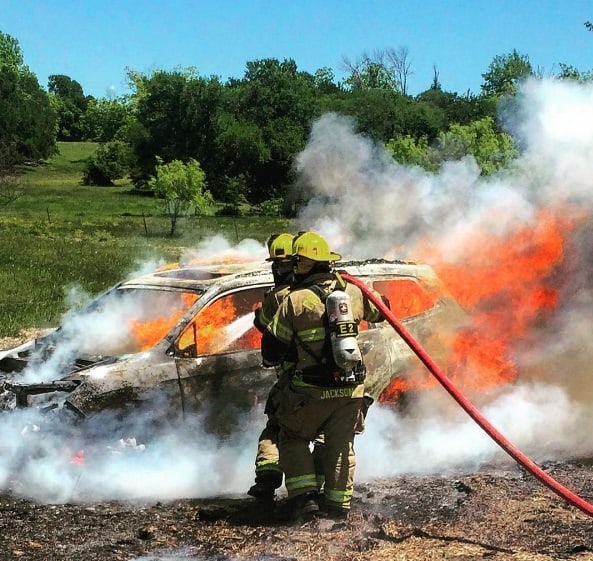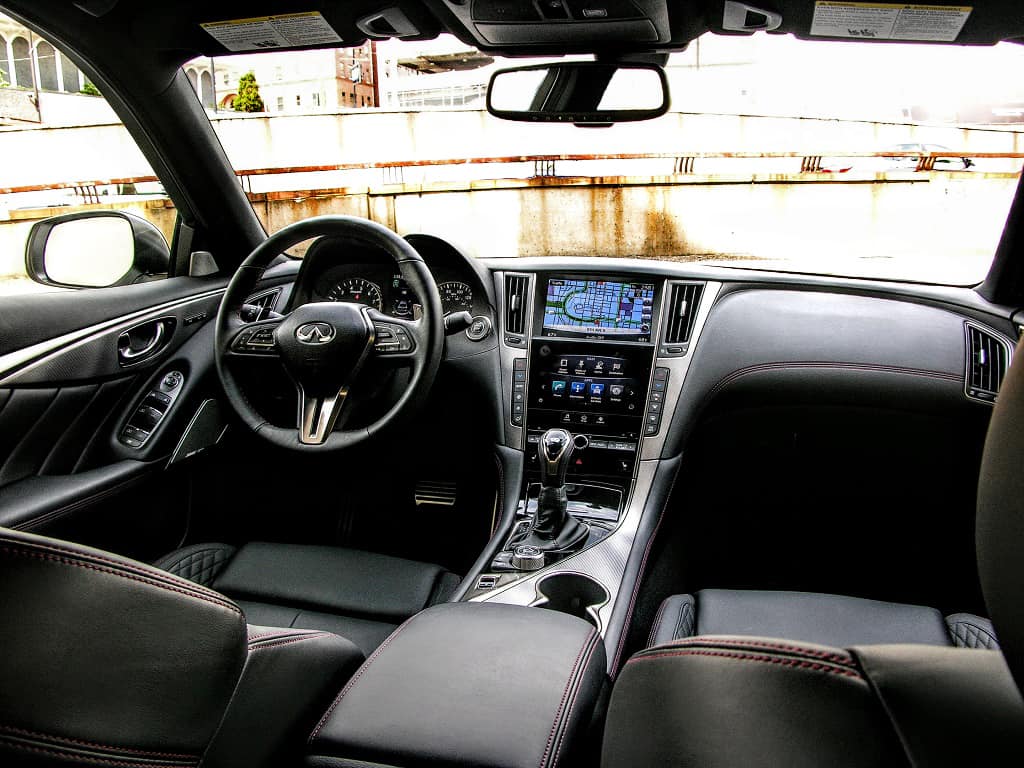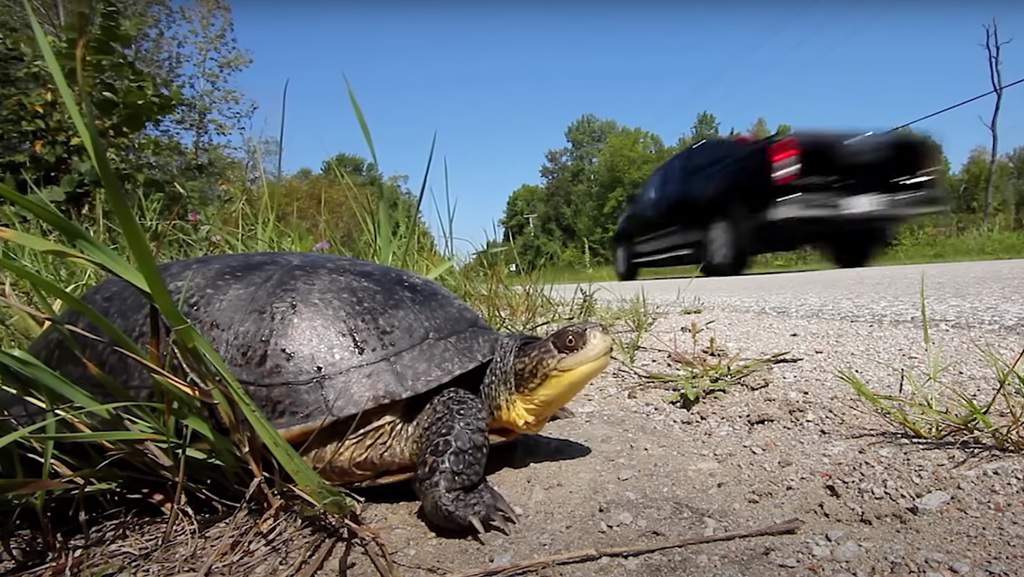Looking to buy a gently used vehicle, but not sure what to watch out for when it comes to safety issues? Smart used car buying goes well beyond kicking tires and checking the odometer, and should always be accompanied by an inspection from a certified mechanic. There’s a lot of room for failure in a used automobile, and hack-job wiring fixes, questionable maintenance records, poor upkeep, and mechanical maladies can quickly turn a vehicle into a ticking time bomb.
According to a report issued by insurance agency, State Farm Mutual Automobile Insurance Company, figures show that there were around 181,500 motor vehicle fires reported in the United States of America in 2018 alone. Although quite a few vehicle fires are the direct result of collisions, this is but one of the many incendiary issues commonly associated with modern automobiles.
After a bit of “heated” research, we discovered some pretty shocking statistics regarding vehicle fires, and have compiled a list of things to look out for when buying (or driving) an older automobile. Everything from electrical gremlins and fuel system failures, to shitty cigarette smoking etiquette and poorly executed pranks can cause a car to catch fire, and as you shall soon see, that’s just the tip of the flame folks.
Quick Nerd Note: Fire needs three things to thrive: Spark, fuel, and oxygen. A moving vehicle will cause air to forcefully fan a flame, which is why pulling over should always be the first step taken when a vehicle fire occurs.

Fire Damage and Automobiles
We begin with an unlikely resource, as fuel and oil monolith, Exxon Mobil, offers some useful insight into the risky world of automotive fires, and what sort of damage occurs when things really start to heat up. The petroleum giant reports that on average, “more than 150,000 vehicle fires are reported every year in the United States, killing an average of 209 people.”
“In the automotive world, smoke does not necessarily mean fire. Depending on the age of the vehicle, it could be steam from the radiator, often caused by a broken fan belt or overheated engine.”
– Exxon Mobil
Another interesting tidbit of info, is that contrary to common belief, the majority of vehicle fires are the direct result of mechanical failure or neglect, and not auto accidents. People also fail to realize that car fires are prone to occurring outside of the engine and fuel system, with “hot spots” being along the underside of the vehicle, within the wheel wells, behind the dashboard, and inside the cabin.
When it comes to vehicle fires, FEMA has its own set of statistics, safety facts, and listicles of correlating dangers, many of which it claims, are often overlooked by the masses. FEMA reports that on average, hidden vehicle damage, careless driving habits, and compromised car components, cause fires that kill over 300 people and injure 1,250 more annually. These injuries and deaths are not just due to extreme heat either, but from people coming into contact with toxic gases and other hazardous substances, as well as projectiles like flying debris caused by explosions.
Alternative fuel vehicles are another major risk that no one thinks about when the words “vehicle fire” come to mind. The batteries, fuel cells, hydrogen, natural gas, propane, unicorn farts, or biodiesel powering modern “green machines,” are also a major fire risk. Battery acid spray, hydrogen flames that are invisible to the naked eye, propane tank bombs, and methanol leaks are all very real risks, not to mention the eye-watering stench associated with freshly ignited unicorn flatulence.
Mythical creature gastronomical references aside, alternative fuel vehicles also present their own unique fire hazards. Take methanol and ethanol for instance, which burn with a light blue flame that is extremely difficult to see in daylight, which creates its own round of risks. There’s also the potential risk of electrocution from the high voltage wires that one finds affixed to hybrid and plug-in electric vehicles.
Oh, and let’s not overlook all of the toxic vapors that are emitted into the air during a vehicle fire. We’ve come a long way since the covered wooden wagon, which when ignited made for a big-ass bonfire, but that was about it. Modern automobiles are almost entirely constructed from man-made synthetic materials, which when subjected to extreme temps, have the ability to emit harmful, if not deadly, gases and steamed vapors. Hell, even the metal portions of an automobile are coated with a layer of chemicals that when exposed to a direct flame, can be toxic to inhale.
But let’s not forget the most dangerous portion of the vehicle fire cocktail: Good old carbon monoxide. Concentrated amounts of this incendiary byproduct remains the most common lethal concentration of odorless, colorless, and tasteless gas on the planet. An invisible assassin, floating on the wind, and ready to rip you a new one at a moment’s notice.
As for the heat itself, a vehicle fire has the ability to generate temperatures well north of 1,500 degrees Fahrenheit. To put that into perspective, let’s recall that scalding water boils at 212 degrees Fahrenheit, and most foods are baked at temperatures south of 500 degrees Fahrenheit. I don’t give a shit what sort of hardcore off-road armor you’ve got on your rig. Once you mix all of the above together, you’ve got a red hot road hazard on your hands that’s going to melt almost anything it touches.
Flames aren’t the only danger flying around either. As all of the different components that create the composition of a car combust under the effects of extreme heat and pressure, shrapnel and debris are often sent soaring to great distances. Hatchback liftgate struts, multi-piece and magnesium wheels, drive shafts, oil and fuel tanks, axles, sealed engine and transmission components, airbags, and that Thermos of coffee on the front seat all have the potential to become bombs.
A Few Red Hot Stats
- Nearly one out of seven fires involves vehicles.
- One out of 10.5 fire deaths results from vehicle fires.
- An estimated 300 civilians are killed and 1,250 are injured each year from vehicle fires.
- 4% of fire-related firefighter injuries each year result from vehicle fires.
Quick Nerd Note: Gas shock absorbers and struts are prone to exploding quickly when subjected to intense heat, turning these key suspension components into the automotive equivalent of spring-loaded pipe bombs.

How to Check a Pre Owned Vehicle for Car Fire Damage
When buying a used vehicle, or driving an older automobile, your best line of defense is to have every system thoroughly checked out by a reputable mechanic. While regular car maintenance certainly helps prevent fire safety issues from arising, keeping an eye out for any number of the following symptoms is crucial.
Always beware of a fuse that blows more than once, as it is likely being triggered by a compromised component, or is directly linked to an electrical issue, both of which are key causes of vehicle fires. The same goes for flagging oil and fuel leaks, and remembering to always use a funnel when adding oil, as pouring petroleum on a scorching hot exhaust manifold is just asking for a fire. As an added safety precaution, always double-check to make sure that the oil cap has been secured properly, as hasty hands in a quick lube service station are occasionally prone to under-torqueing things.
Another common source of vehicle fires are catalytic converter related issues. These exhaust fume filters are prone to hosting internal, slow-burning fires when they are damaged or are past their prime, and due to their extreme temperatures, can ignite things like undercoating, or dried grass and leaves when parked.
A PSA from America’s National Fire Protection Agency (NFPA) goes on to explain that while a heavily fire damaged car may be easy to spot, there are plenty of cars rolling around without any sign of prior damage. This is why it is so important to run a Carfax report when buying a used vehicle, because you never know if a minor accident may lead to some form of future fire damage history. Remember, a vehicle’s accident history is linked directly to its VIN, or vehicle identification number, which is always recorded, regardless as to whether it’s a minor fender-bender, severe flood damage, or any other number of auto insurance coverage related scenario.
Sure Signs of a Fiery Time
- Fuses that blow repeatedly
- Spilled oil under the hood left over from an oil change or from a leaky gasket
- Fluid leaks under the vehicle
- Smelling gas when not refueling
- Cracked or loose wiring with exposed metal
- Loud sounds from the exhaust system or engine compartment
- Rapid changes in fuel levels, oil levels, or engine temperatures
- A missing oil filler cap
- Broken or loose engine hoses
- Aromas of burning plastic or rubber
Quick Tip: When driving an older, or heavily abused automobile, beware of cracked or loose wiring, electrical anomalies, rapid changes in fuel or fluid levels, or extreme engine temperatures. All of these things can lead to a vehicle fire, so if any number of these maladies have recently manifested, get your vehicle inspected immediately. Just beware that these issues may not be listed on the car’s vehicle history report or covered under a basic auto insurance policy.

What to Do in Case of a Vehicle Fire
Unlike salt damage, vehicle fires spread quickly and hurt more than just the automobile. If you smell smoke or see flames spewing from a section of your vehicle while driving, knowing precisely what to do can be the difference between a hasty escape and a head-on collision. It’s crucial that you act swiftly yet calmly, because jerking the wheel in panic, or slamming the breaks on the interstate is only going to put you and those around you in further danger.
The National Fire Protection Association Council recommends following these steps if you’re driving and a vehicle fire starts:
- Turn on your hazard signal and immediately move to the closest safe place to stop, may it be a side lane, a median, or a parking lot.
- Put the car into park, turn off the ignition, and don’t forget to take your keys.
- Get passengers out of the car, and don’t allow anyone to go back to retrieve personal items.
- Move as far away from the burning vehicle to avoid the flames and toxic fumes (at least 100 feet) and keep bystanders back.
- Call 911.
- Alert oncoming traffic if possible.
- If you choose to use a fire extinguisher, only do so from a safe distance and always have a means of getting away in a hurry.
- Only use a fire extinguisher that has been approved for use on class B and class C fires.
- Do NOT open the hood or trunk if you suspect a fire may be smoldering inside. Exposing a fire to a fresh flow of oxygen will only cause it to grow in size rapidly.
Quick Nerd Note: If the fire is within the vehicle’s cabin, closing the doors and windows may smother the fire. This is why firefighters instruct you to never open the hood if smoke is coming from the engine bay, but to pop the hood release instead, and quickly spray through the gap from a safe distance. Remember, always aim for the base of the flame, because if you can saturate its fuel source it will be forced to subside.

How to Prevent a Car Fire
While products like Armor Shield IX will do wonders for those in search of a dash of paint protection or aluminum corrosion resistance, it won’t do shit against a full-blown vehicle fire.
This is why it is so crucial to have your vehicle serviced on a regular basis by a professionally trained, certified mechanic. You may think your car is running like a dream, but all it takes is one little oil leak, and blammo… you’ve got the words “fire damage” on your vehicle history report.
Here are a few things to keep in mind, all of which will help prevent a vehicle fire from forming.
- If you must transport gasoline, transport only a small amount in a certified gas can that is sealed. Keep a window open for ventilation.
- Gas cans and propane cylinders should never be transported in the passenger compartment.
- Never park a car where flammables, such as grass, are touching the catalytic converter.
- Drive safely to avoid an accident.
While putting the blaze out on your own may sound like a good idea, a general familiarity with fire extinguishers and the various forms of fire suppression should be considered prior to taking matters into one’s own hands. However, if you feel comfortable with using a fire extinguisher, and the blaze is producing little more than a bit of smoke damage, a quick spritz isn’t a bad idea.
Quick Nerd Note: Flames from burning vehicles don’t just have the ability to melt glass and distort metal, but the ability to reach great distances, which when accompanied by wind gusts, can reach well over 10 feet in any direction.
Fire safely extinguished, (either by yourself or by local firefighters) the next question is whether or not your automotive insurance policy will cover the anarchy that just occurred. So contact your car insurance agent, take photos of the damage, and collect the names and phone numbers of any witnesses that might have seen said shit-storm.
Once the vehicle has been towed for an inspection, you will be notified as to whether or not the damage and projected repair costs exceed the value of the automobile. If it’s more than what the vehicle is worth, or the incident is outside the bounds of standard collision coverage, your auto insurance company might consider the car a total loss. This leads us to the entire topic of dealing with a salvaged car title and all of the red tape-wrapped headaches associated with obtaining a rebuilt title and restoring a respectable vehicle history report. Oh but look, we’re out of time. Guess that hot mess will have to wait for another blog feature. Until then, stay safe out there, and get those vehicles inspected. Your decision to do so could save someone’s life…












